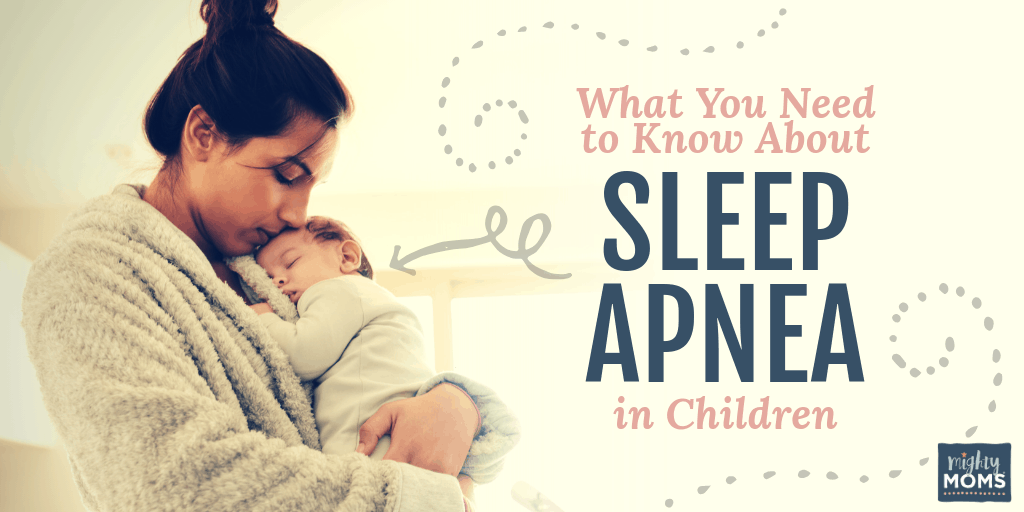Sleep apnea in children
Posted on 16-02-2020 07:27 PM

Sleep Apnea in children
Sleep Apnea is often associated with adults. That is, few parents would ever consider their child’s sleeping problems as “respiratory.” And for a reason. On average, sleep apnea is less prevalent in children than in adults.
However, it does happen. A child’s low sleep hours can come from undiagnosed apnea. In fact, the “American Sleep Apnea Association” estimates that 4% of children (aged 2-8) suffer from it.
If your child has sleeping problems, then consider OSA (Obstructive Sleep Apnea). We’ll discuss it below, and how to deal with it!
Syptoms and Signs Sleep apnea in children
They include the following…
- Gasp/Choke noises during sleep.
- Wheezing/Squeaking when inhaling.
- Concentration difficulties (when awake).
- Daytime hyperactivity.
- Snoring - 10% of snoring children have sleep apnea.
- Mouth breathing - occurs in children with enlarged adenoids.
- Breathing pauses in sleep.
- Sleepiness during the day.
- Behavioral problems.
- Bedwetting.
Main Causes of Sleep apnea in kids
It’s similar to the condition in adults. During sleep, a blockage occurs in the child’s airways, and specifically at the back of the throat.
Many factors contribute to this blockage, with “the most prominent” being excess fat tissue and enlarged tonsils.
Enlarged Tonsils - This can result from inflammatory problems (tonsillitis), or they can be developmental problems – thus being genetic.
Make sure you check your family history for “breathing problems”.
Fatty Tissue - This can result from obesity in children, which is common today considering the unhealthy diets they consume.
Also, note that fatty throat tissue is more common for 12-18 year old children. Basically, teenager sleep apnea is more affected by obesity than other factors.
Consequences.
Those obstructions lead to drops in blood oxygen levels at night. And this is can lead to oxygen deprivation in a child’s brain.
Beyond oxygen deprivation, sleep apnea disrupts your child’s sleep quality. They’ll awaken often at night, and be unable to get enough sleep.
This can compromise their physical and mental health, which is dangerous in the sensitive development stage of development.
Risk Factors in Detail.
The previous list detailed basic causes. But even those causes have their “own causes,” those being risk factors.
Below, we’ll explore some of them. They’re usually explored by specialists, but it’s good to know them as a parent!
Inflammation in tonsils and adenoids, leading to airway blocks. Additionally, enlargement without inflammation is a risk factor. Larger tissues are more prone to collapsing and blocking the throat during sleep.
Labored breathing from misshaped palates (which are either elongated – or have soft tissue).
What About Allergies?
They contribute to sleep apnea. But, they’re not the sole causes of it. Instead, they usually aggravate the problem (especially seasonal variants).
Sleep Apnea Treatments.
You can use the following treatments. Many can be applied alone, but the best require a specialist’s help.
They include…
- Allergy medications – if the sleep apnea is normally controllable, but aggravated by seasonal allergies.
- Medications for tonsil or adenoid inflammation, if diagnosed.
- Use of decongestants and pharmaceutical anti-inflammatories.
- Surgical corrections in the mandibular (or tonsil removal) is recommended.
- Oral/dental appliances may be given to teenagers, where their facial bone structure should be complete by then.
Home Treatment Options.
Now, while the previous options do require medication and surgery, they’re not your only options.There are non-invasive procedures you can try! You can use CPAP ventilation during your child’s sleep, which keeps their oxygen levels in check.
Also, you can experiment with special medical pillows that might alleviate sleep apnea, by repositioning the head and throat.
Important Recommendation.
If you think your child has sleep apnea, you can sign them into an overnight PSG (Polsomnogram). Also known as a sleep study, this is administered by professionals to detect sleep problems, and are effective for children.
PSGs measure many vital metrics in sleep, from heart and breathing rate, to blood glucose levels, and muscle activity. Additional metrics for children also include end tidal CO2 levels.
We actually recommend this treatment as fast as possible. After all, sleep apnea is dangerous in children.It harms their development, and may cause lifelong problems as they grow older!